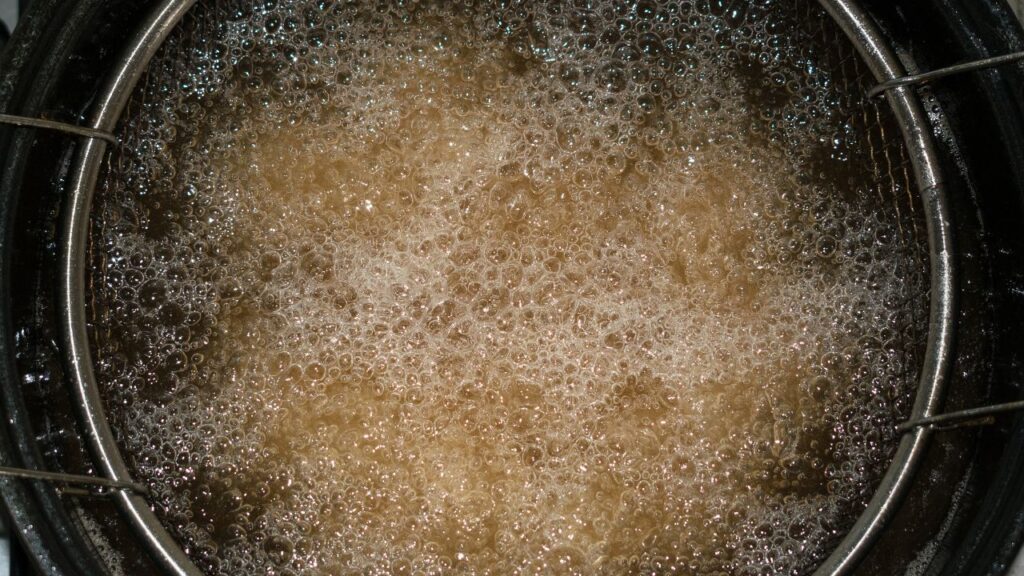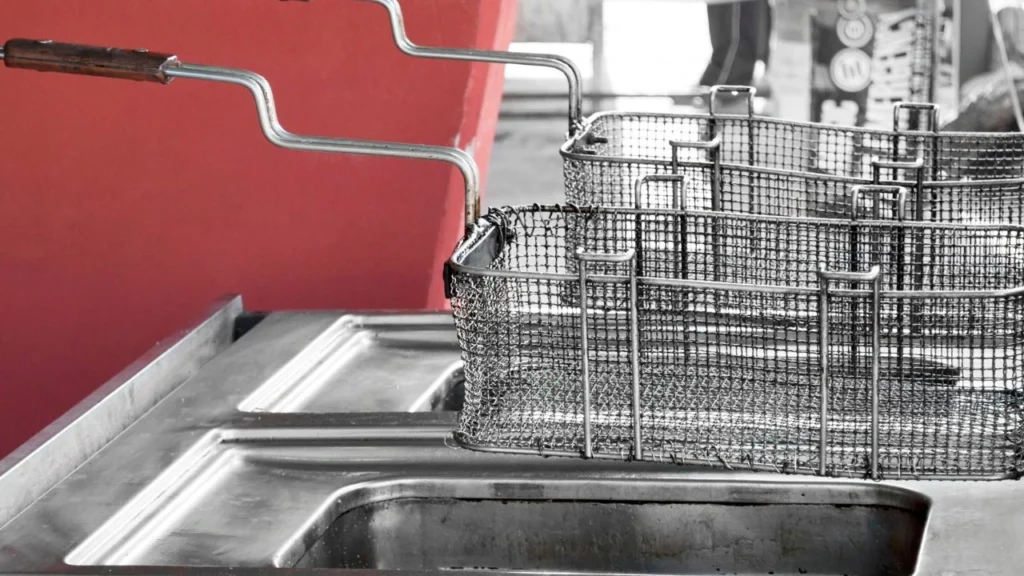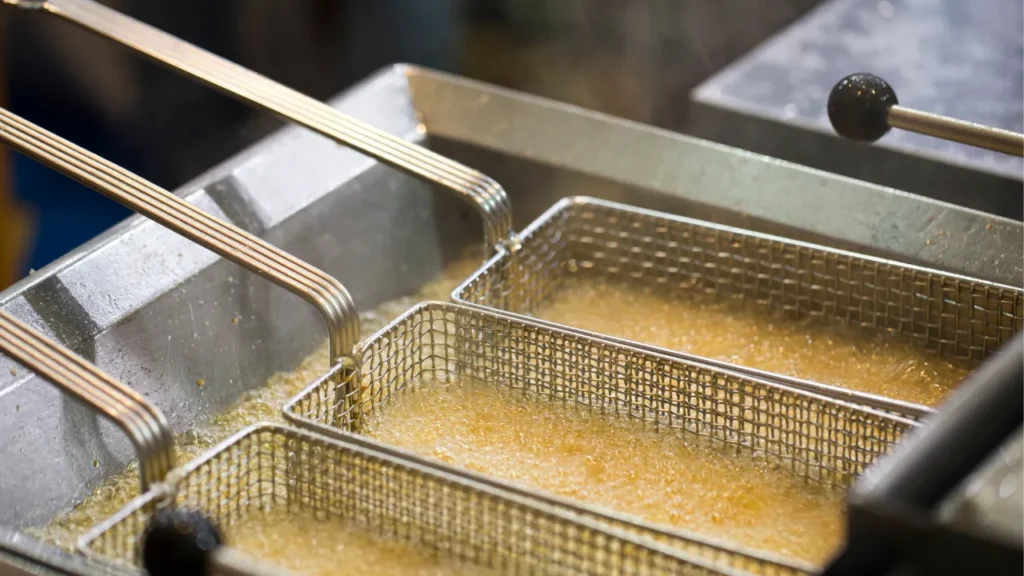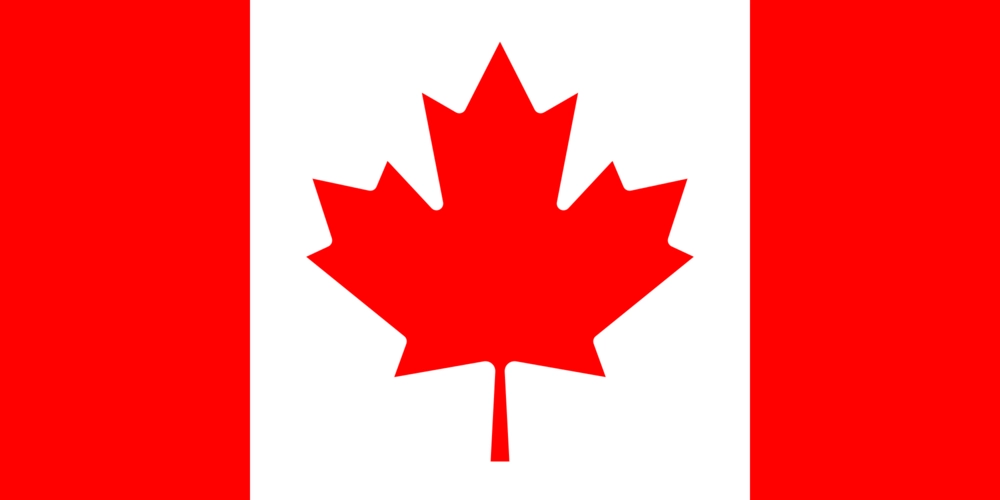Your diner is bustling on Friday night. The kitchen sizzles with golden fries and crispy chicken. The commercial deep fryer works hard but often gets overlooked for maintenance.
Proper cleaning of the deep fryer is crucial. It ensures delicious food and a safe, efficient kitchen. Regular maintenance is key to a thriving restaurant.
A well-maintained deep fryer needs thorough cleaning monthly. High-volume kitchens might need weekly cleaning. Regular cleaning extends the fryer’s life and ensures food safety.
It also keeps your crispy creations tasting their best. Let’s explore how to keep your commercial deep fryer in top shape.
Cleaning Importance

A clean commercial deep fryer is crucial for a successful kitchen. Regular cleaning ensures great food quality and boosts energy efficiency. It also extends the life of your equipment.
Let’s explore why clean fryers matter and how they impact your business.
The Power of Regular Cleaning
Deep fryer cleaning is key to kitchen success. A consistent cleaning schedule improves food taste and equipment performance. It can even boost your profits.
Here’s why regular cleaning makes a big difference:
- Prevents flavor transfer between different foods
- Reduces energy consumption by improving heating efficiency
- Extends the lifespan of your fryer, saving on replacement costs
- Maintains food quality and customer satisfaction
Fryer safety protocols are just as important. Regular checks of thermostats and gas lines ensure safe operation. High-use fryers may need weekly deep cleaning for best results.
| Cleaning Task | Frequency | Benefits |
| Wipe down interior surfaces | Daily | Prevents buildup, maintains cleanliness |
| Change oil | Weekly or as needed | Ensures food quality, prevents flavor transfer |
| Boil-out procedure | Weekly for high-use fryers | Removes stubborn grease, maintains efficiency |
| Professional maintenance | As recommended by manufacturer | Comprehensive checks, repairs, ensures safety |
Follow these tips and your fryer’s manual to keep it in top shape. A clean fryer helps serve tasty, safe food while saving money.
Preparing for Cleaning

Proper deep fryer maintenance begins with preparation. Safety measures and the right cleaning supplies are crucial. These ensure a safe and effective cleaning routine for your commercial deep fryer.
Safety First
Turn off the fryer and unplug it from the power source. For gas-operated fryers, close the gas supply inlet. Let the fryer and oil cool to at least 150°F before cleaning.
Essential Cleaning Tools
Gather these fryer cleaning supplies:
- Heat-proof gloves
- Protective eyewear
- Apron
- Fryer cleaning rod
- Metal spatula
- Soft-bristle brushes
- Non-abrasive pads
- Commercial-grade degreasers or specialized fryer cleaners
Workspace Preparation
Clear the area around the fryer for safe and efficient cleaning. This step is often overlooked but crucial. With proper preparation, you’re ready to tackle deep fryer maintenance effectively.
| Cleaning Task | Frequency |
| Filter fryer oil | At least once a day |
| Boil out fryer | At least once a week |
| Deep clean fryer | Every 3-6 months |
| Replace oil | At least twice a week |
Draining the Oil

Good oil management is key for tasty food and longer fryer life. Let’s look at how to drain and handle used fryer oil.
Proper Disposal
Never pour used fryer oil down the drain. Hire a grease collection service or recycle it instead. Some places allow oil in the trash, but check local rules first.
Environmental Considerations
Smart oil disposal helps protect nature. Recycling used oil can cut waste and make biodiesel fuel. Choose eco-friendly methods to reduce your restaurant’s impact on the earth.
Safe Disposal Methods
To safely dispose of fryer oil:
- Allow oil to cool completely
- Drain into a secure container
- Seal the container tightly
- Contact a licensed waste management company
Filtering and Storing Reusable Oil
For oil, you’ll reuse it; filter it daily to remove bits. Store filtered oil in a cool, dark spot if not using right away.
Watch oil quality closely. Replace it when it smokes at lower temps, gets darker, or smells off.
| Oil Condition | Action Required |
| Smoking at lower temps | Replace oil |
| Darker color | Consider replacement |
| Off-putting smell | Dispose immediately |
| Thick, foamy surface | Time to change oil |
Cleaning the Interior
A clean commercial deep fryer is essential for great food and equipment longevity. It heats oil faster and cooks food evenly. Let’s explore the steps for a thorough interior cleaning.
Removing Large Debris
Begin by scooping out large food particles with a skimmer or strainer. This step prevents debris from interfering with the cleaning process. It also ensures a more effective deep clean.
Fryer Pot Scrubbing
Next, scrub the fryer pot with a cleaning rod or scraper. Remove built-up residue from the interior walls, corners, and base. Focus on areas where grease and food particles often collect.
Deep Fryer Boil Out
For a deep clean, perform a fryer boil out. Fill the fryer with water and add a special cleaning solution. Boil this mixture for 20-30 minutes, scrubbing interior surfaces with a long-handled brush.
This process helps break down tough grease and grime. It’s an effective way to remove stubborn buildup.
Final Rinse and Dry
After boiling, drain the cleaning solution and rinse with hot water. Remove all traces of the cleaner. Dry the interior completely before adding fresh oil.
Regular deep cleaning every 3-6 months prevents stubborn residue buildup. It keeps your fryer in top condition for optimal performance.
Cleaning the Exterior
Keeping your commercial deep fryer’s exterior clean is vital. It maintains a professional look and prevents grease buildup. This helps the fryer perform better and last longer.
Wiping Down Surfaces
Use a special cleaner for commercial kitchen gear. Apply it to all exterior surfaces, focusing on greasy or dirty areas. For tough spots, gently scrub with a synthetic pad.
Using a Damp Cloth
After cleaning, wipe all surfaces with a damp cloth. This removes any leftover cleaner. Dry the fryer well to avoid water spots and rust.
Focus on Control Panels and Handles
Control panels and handles need extra care. They’re often touched and can collect oils and germs. Use a mild cleanser and soft cloth for these parts.
Clean these areas carefully to avoid damaging electronic parts. Make sure they’re free from grease and grime.
Polishing Stainless Steel
Good stainless steel care keeps your fryer looking great. Use a special polish to bring back shine and fight rust. Apply the polish along the grain to avoid scratches.
| Cleaning Task | Frequency | Tools Needed |
| Wipe down surfaces | Daily | Specialized cleaner, cloth |
| Clean control panels | Daily | Gentle cleanser, soft cloth |
| Polish stainless steel | Weekly | Stainless steel polish, microfiber cloth |
| Deep clean exterior | Monthly | Degreaser, scrub brush, protective gear |
Reassembling the Fryer

Proper reassembly is vital after cleaning your commercial deep fryer. This process involves careful inspection and thorough reassembly. Let’s explore the steps to prepare your fryer for its next use.
Checking Components
Begin by examining all parts of your fryer. Look for wear or damage on the thermostat, gas lines, and electrical components. This inspection helps prevent issues and ensures safe operation.
Inspecting for Wear and Tear
Focus on seals, gaskets, and heating elements. Replace parts showing excessive wear. Regular checks can extend your fryer’s lifespan and maintain efficiency.
Replacing Damaged Parts
Replace damaged components immediately if found during inspection. Use genuine parts from the manufacturer. This ensures compatibility and maintains your fryer’s performance.
Refill with Oil
Once all parts are dry and in place, refill the fryer. Use fresh or properly filtered oil, filling to the minimum line. Ensure all components are secure before powering on.
| Component | Inspection Frequency | Common Issues |
| Thermostat | Monthly | Inaccurate readings, slow response |
| Gas Lines | Weekly | Leaks, cracks, loose connections |
| Heating Elements | Bi-weekly | Uneven heating, burnout |
| Seals and Gaskets | Monthly | Wear, tears, oil leakage |
Routine Maintenance Tips
A good fryer maintenance plan keeps your commercial deep fryer working well. Following these tips will make your fryer last longer. It will also ensure your food quality stays high.
Recommended Cleaning Frequency
Set up a daily, weekly, and monthly cleaning routine. Wipe down your fryer every day. Do thorough cleanings each week.
Schedule monthly deep cleanings or boil-outs. Busy kitchens should be deep clean weekly.
Extending Fryer Lifespan
Use high-quality oil and don’t overload the fryer. This helps keep the right temperature. Filter oil daily to remove dirt.
Store oil properly when not in use. These steps help avoid frequent oil changes. They also prevent fryer damage.
Monitoring Oil Quality
Checking oil quality is key for fryer performance. Look for signs of bad oil daily. Watch for darker color or strange smells.
Replace oil when it smokes at lower temps or changes color. Good oil care ensures tasty food. It also prevents fryer problems.
Regular Inspections and Repairs
Check your fryer’s parts often. This includes the thermostat, gas lines, and electrical parts. Consider professional maintenance for thorough checks.
Regular upkeep prevents sudden breakdowns. It also keeps your fryer running safely.
| Maintenance Task | Frequency |
| Oil Filtering | Daily |
| Thorough Cleaning | Weekly |
| Boil-Out | Monthly (or Weekly for high-use) |
| Professional Inspection | Quarterly |
Insights – How Do You Clean a Commercial Deep Fryer
Proper commercial deep fryer cleaning is vital for kitchen success. Follow these steps to boost performance and efficiency. Your equipment will last longer and work better.
Key Steps
Perform boil-outs monthly, or weekly for busy fryers. Deep clean regularly as per manufacturer guidelines. Use top-quality oil and filter it often.
Train staff on safe fryer use to avoid accidents. Use commercial-grade cleaning solutions and wear safety gear like heat-resistant gloves.
Benefits of Proper Cleaning and Maintenance
Clean fryers offer many advantages. VEVOR and Frymaster fryers have features that make cleaning easier. They also help oil last longer.
Anets fryers use tube-fired heating, saving money over time. Good equipment and maintenance reduce downtime and repair costs. They also keep food quality high.
Call professionals for repairs to prevent damage. This helps your fryer last longer. Prioritizing fryer upkeep is smart for your kitchen’s success.
It’s not just about cleanliness. It’s an investment in efficiency and food quality. These practices lead to smoother operations and happy customers.
FAQ
What’s the best way to clean a commercial deep fryer?
The most effective method to clean a commercial deep fryer involves turning off and cooling the fryer, draining the oil, and using a fryer cleaning solution to remove grime and grease.
How do you remove caked-on grease from a deep fryer?
Add a heaping spoonful of baking soda to a small bowl, then mix in enough hot water to create a paste. Apply this paste to sticky or caked-on grease, using a soft cleaning brush on nonstick surfaces.
How do you clean a commercial fryer with vinegar?
Scrub the fryer with soapy water, then empty it and refill with clean water. Add 1/2 cup of white vinegar, and use a clean rag to wipe all interior surfaces. Find a detailed process in this GoFoodservice step-by-step guide.
How to clean a heating element in a deep fryer?
Clean heating coils daily by wiping them and using warm water or a brush to remove oil buildup. Regular maintenance of the heating element ensures it functions properly. Learn more in this guide to cleaning a fryer’s heating element.
What tools and materials are needed to clean a commercial deep fryer?
You’ll need protective gloves, a fryer brush, sponge or non-abrasive scrub pad, grease-resistant container for oil disposal, a commercial degreaser or fryer cleaning solution, and a water hose or bucket. Additionally, a metal scraper and drain valve extension can help with stubborn debris and safe oil draining.
Resources
https://www.nycoproducts.com/resources/blog/how-to-clean-a-commercial-deep-fryer/
https://www.dslinc.com/five-easy-steps-for-cleaning-a-commercial-deep-fryer








